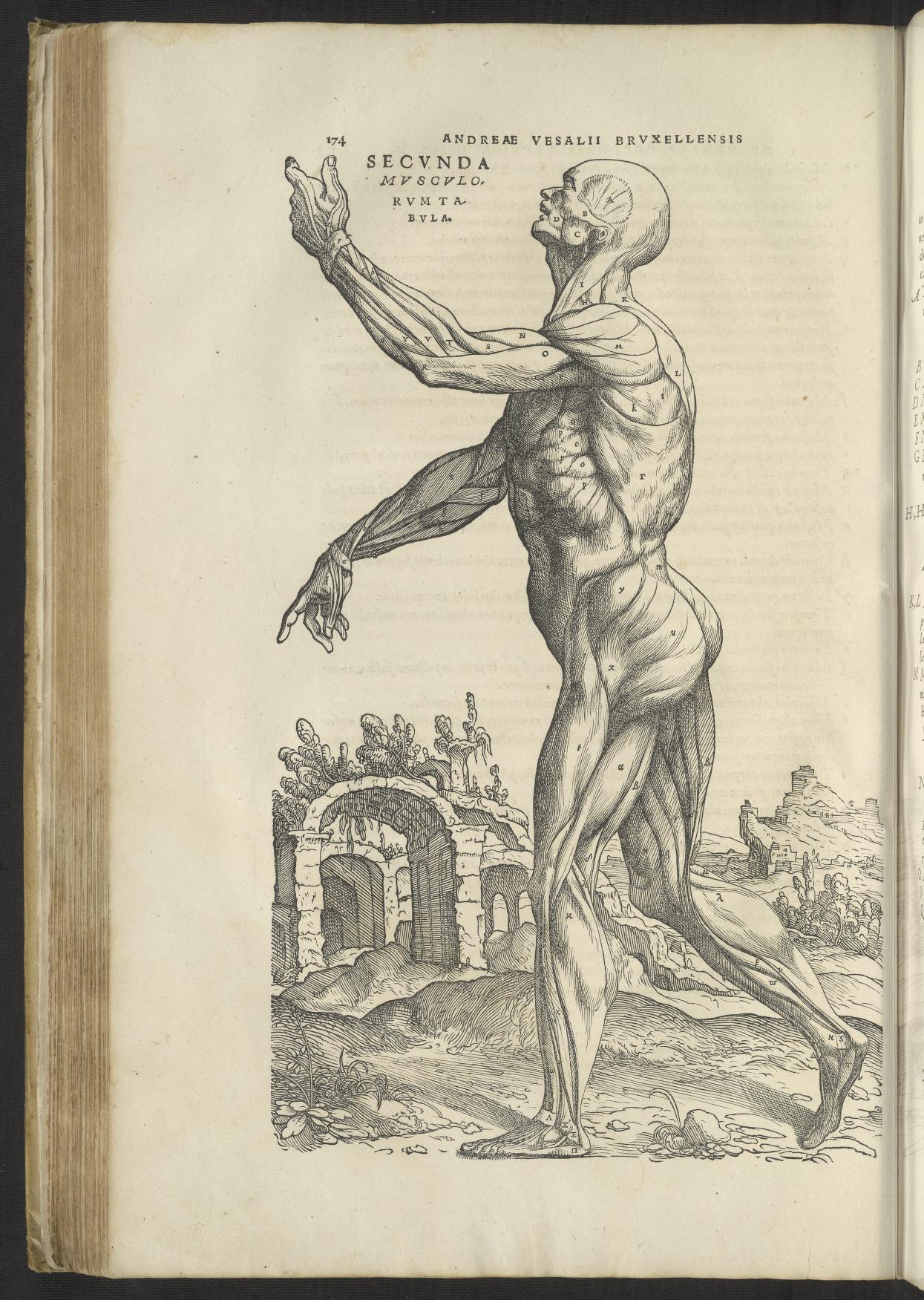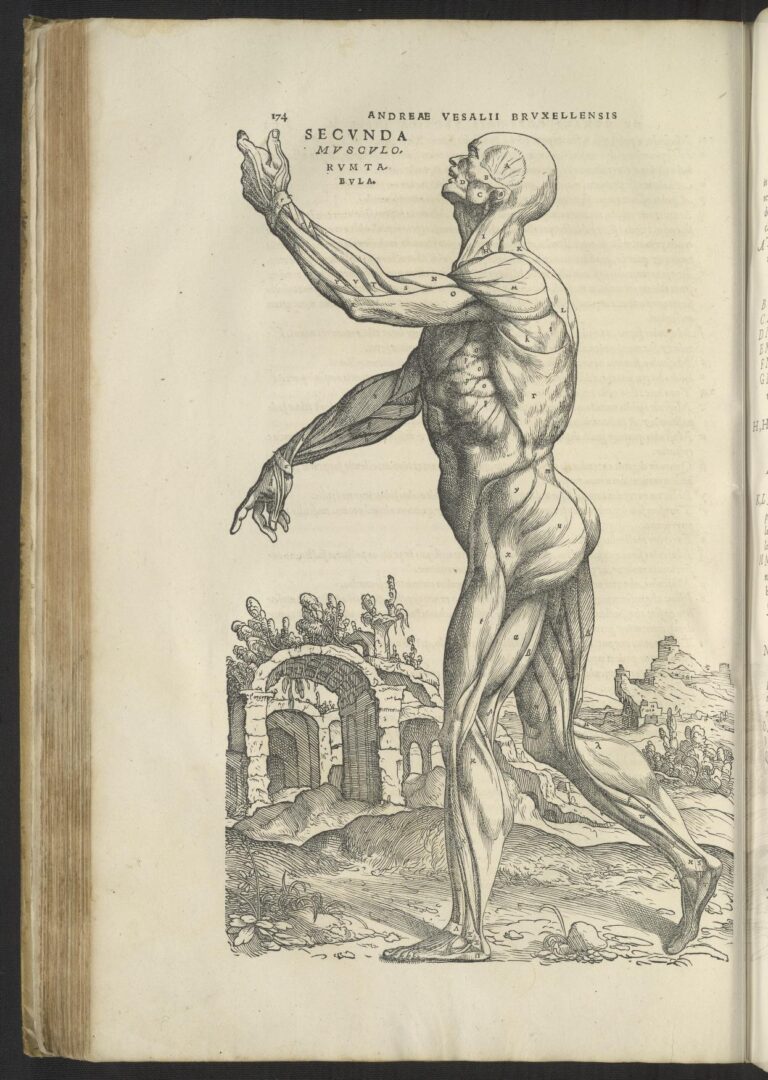In 1543, a young surgery professor from Brussels published a hefty and strikingly beautiful anatomical atlas that changed the way we study medicine. Rather than repeating the findings of ancient texts, he chose to write about the observations that he made while performing hundreds of human dissections. In so doing, he placed anatomy at the forefront of medical education for the first time.
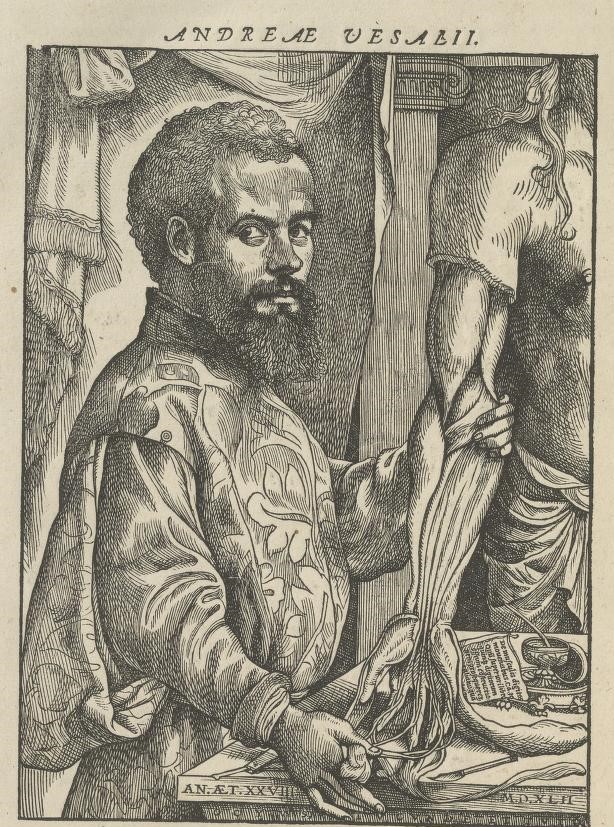
During the Middle Ages and early Renaissance, physicians turned to ancient texts, such as those by the Greek physician Hippocrates and the Roman Galen, to learn about the inner workings of the body. In the 1530s, Andreas Vesalius (1514-1564) was teaching anatomy and surgery to medical students at the University of Padua when he helped to edit and translate the works of the ancient Roman physician Galen. Diving deep into the text, he discovered that Galen had not based his anatomical descriptions on dissections of human cadavers but rather on animals—monkeys (such as Barbary macaques), sheep, and dogs. Vesalius was also dismayed by how little emphasis was placed on learning anatomy in medical school, where it was common practice for students merely to read a text by Galen or to observe a quick dissection that was performed by a barber surgeon without much attention to anatomical detail. Vesalius felt that knowledge of human anatomy was essential to understanding the body and its ailments.
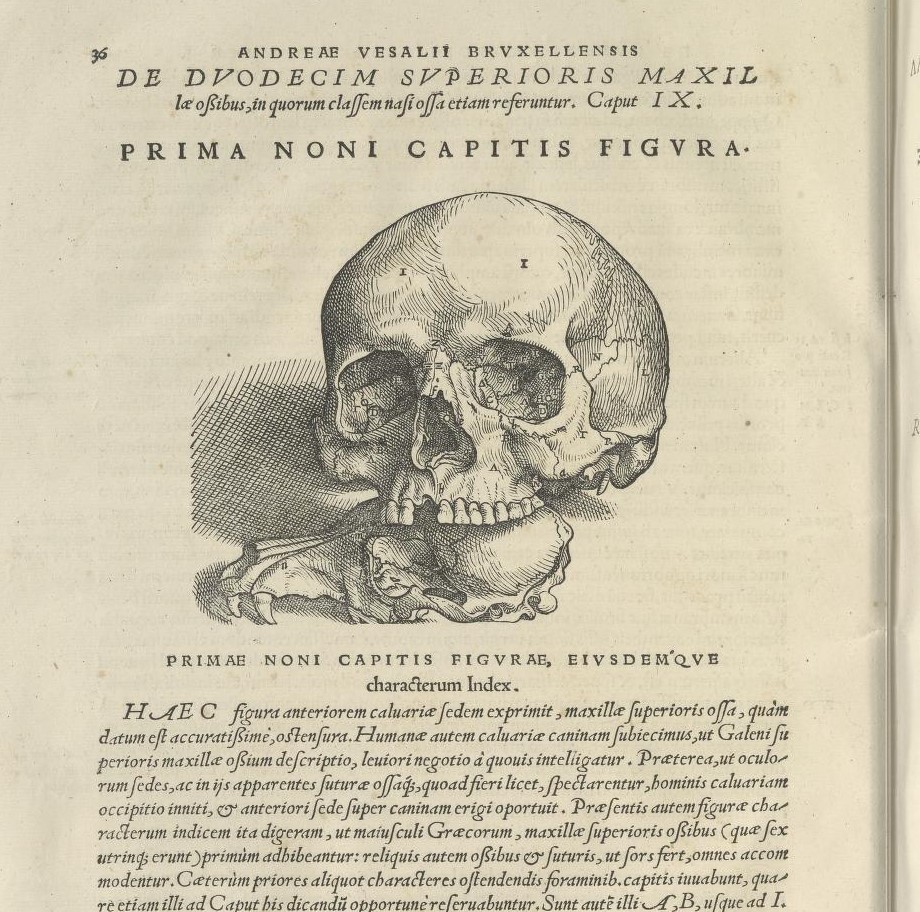
As a remedy for this gap in the curriculum, Vesalius wrote a book with highly detailed illustrations and textual descriptions that were entirely based upon his own observations of the human body. He engaged the noted artist Jan Stephan van Calcar (a student of Titian) to craft striking woodcut illustrations to accompany his text. The content and the illustrations were based on Vesalius’ meticulous notes and drawings from the numerous dissections that he had performed using the cadavers of executed criminals as well as newly-interred bodies that had been stolen from local graveyards.
These efforts resulted in a massive volume that was perhaps the most influential medical book of the century, De Humani Corporis Fabrica (On the Fabric of the Human Body). Printed in Basel in 1543, the book caused immediate reactions—both positive and negative—from the medical profession. Traditionalists argued that Galen could not have made so many mistakes and that his writings were unassailable. But other physicians were moved by Vesalius’ novel research method in that he recorded his own observations rather than repeating the views of ancient authors.
While Vesalius’ approach was extraordinary in the field of medicine, similar methodological shifts were taking place at this time in other scientific disciplines. The study of astronomy changed dramatically with the first printing of Nicolaus Copernicus’ heliocentric model of the solar system in 1543. The field of botany was impacted in 1542 by Leonhard Fuchs’ ground-breaking book on plants. As a result, Vesalius’ work became a symbol of this larger sixteenth-century paradigm shift in the history of modern science. A testament to Vesalius’ impact, anatomy became a central subject in medical schools, and, even today, first-year medical students dissect cadavers.
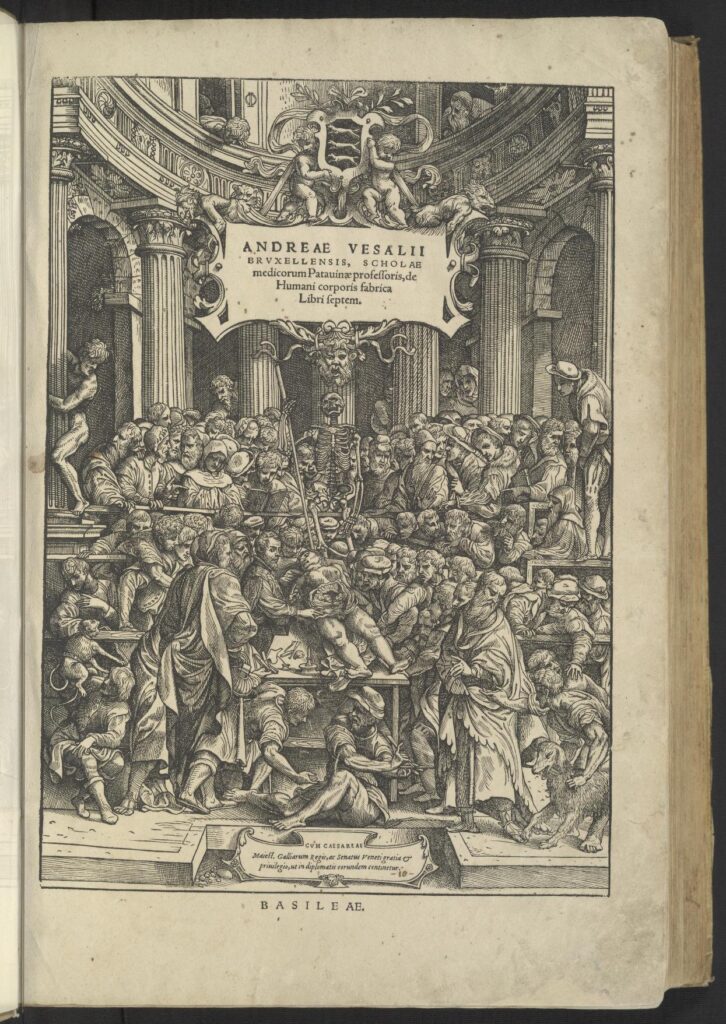
As soon as it was printed, De Humani Corporis Fabrica (often simply called “De Fabrica”), gained popularity beyond its intended medical readership because of its stunning woodcuts. The anatomical illustrations—especially the famous title page, the “muscle Figures,” and the skeletons—were admired by the artistic community, and these images are now considered to have been some of the the most important and influential woodcuts of the sixteenth century. Beautiful, animated, and eerie, these images were plagiarized almost immediately upon publication, and other anatomical atlases with similar approaches soon followed.
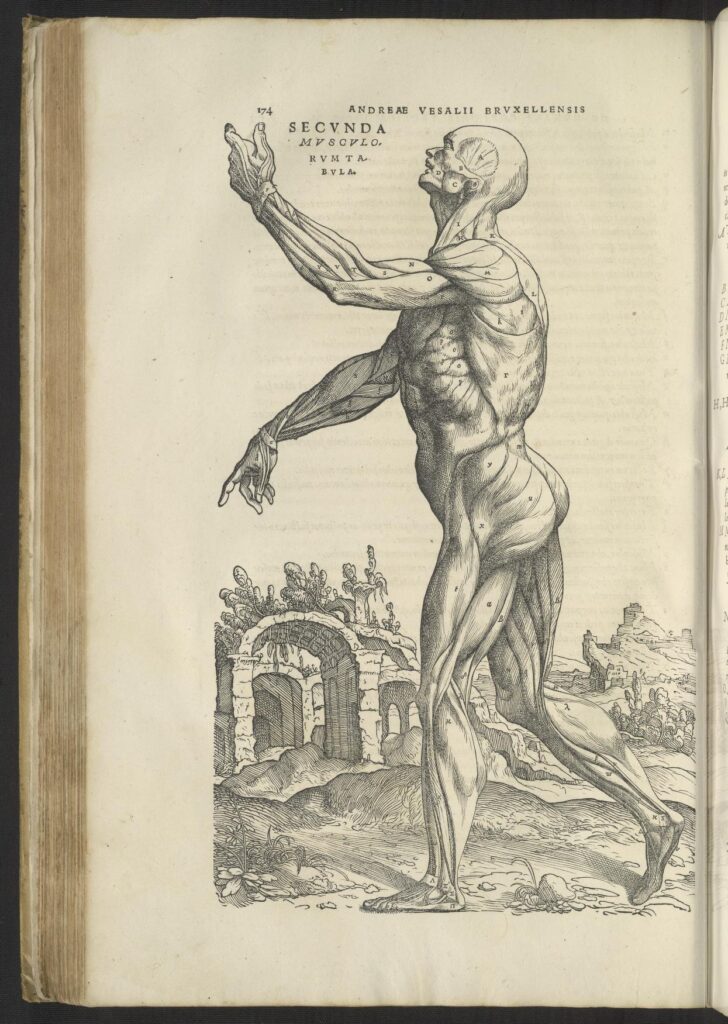
De Fabrica has been studied from cover-to-cover for more than four hundred years. It is a cherished item in many rare book collections—especially at medical school libraries around the world. The Library of Congress owns a special copy of De Fabrica, donated by Lessing J. Rosenwald, which has been digitized recently, and it is now available for free on the Library’s website. Also available online is the Library’s copy of Vesalius’ De Humani Corporis Fabrica Librorum Epitome. Often just called the “Epitome”, this book was published alongside the De Fabrica in 1543 as a shorter dissection manual for medical students that included several of the same beautiful woodcuts.
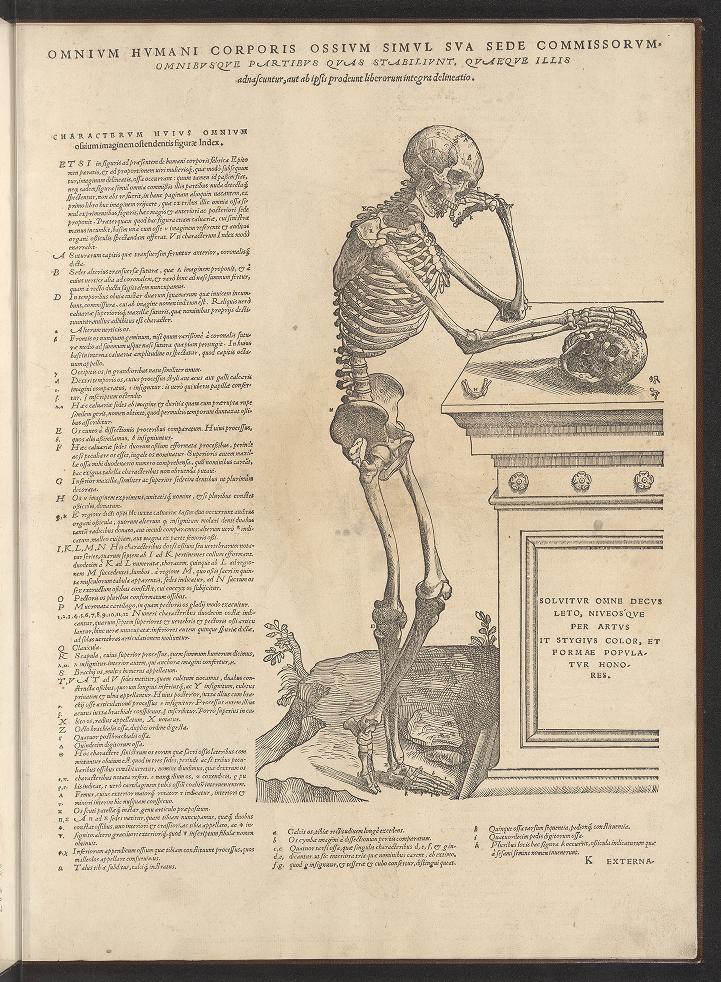
Careful bibliographers have discovered that the Library of Congress’ copy of De Fabrica is an unusual variant. Likely issued using mostly pages that were originally printed in 1543, this copy shows evidence of type resetting on certain pages (including the famous title page). Judging from the types used in the variant, it is likely that the Library’s copy was printed in 1548 or 1549. Only a few copies of this variant exist, including one at the Mayo Clinic’s W. Bruce Fye History of Medicine Library in Rochester, Minnesota. Digitization, which enables access to online users all over the world, makes it easier to study and compare these typographical variations in detail.
Further resources:
Horowitz, Michael, and Jack Collins. “A Census of Copies of the First Edition of Andreas Vesalius’ ‘De Humani Corporis Fabrica’ (1543), with a Note on the Recently Discovered Variant Issue.” Journal of the History of Medicine and Allied Sciences, vol. 39, no. 2, 1984, pp. 198–221. https://www.jstor.org/stable/24633235
Margócsy, Daniel; Mark Somos; and Stephen N. Joffe. The Fabrica of Andreas Vesalius: A Worldwide Descriptive Census, Ownership, and Annotations of the 1543 and 1555 Editions. (Leiden: Brill, 2008). https://lccn.loc.gov/2018010831
North, Michael. “Andreas Vesalius at 500: A series to commemorate the 500th anniversary of the birth of the great anatomist Andreas Vesalius, born on December 31, 1514.” Circulating Now: from the Historical Collections at the National Library of Medicine, December 2013-December 2014. https://circulatingnow.nlm.nih.gov/category/series/andreas-vesalius-at-500/
O’Malley, C.D. Andreas Vesalius of Brussels, 1514-1564. (Berkeley: University of California Press, 1964). https://lccn.loc.gov/64015917
Source: https://blogs.loc.gov/bibliomania/2024/05/20/the-first-modern-medical-book/
